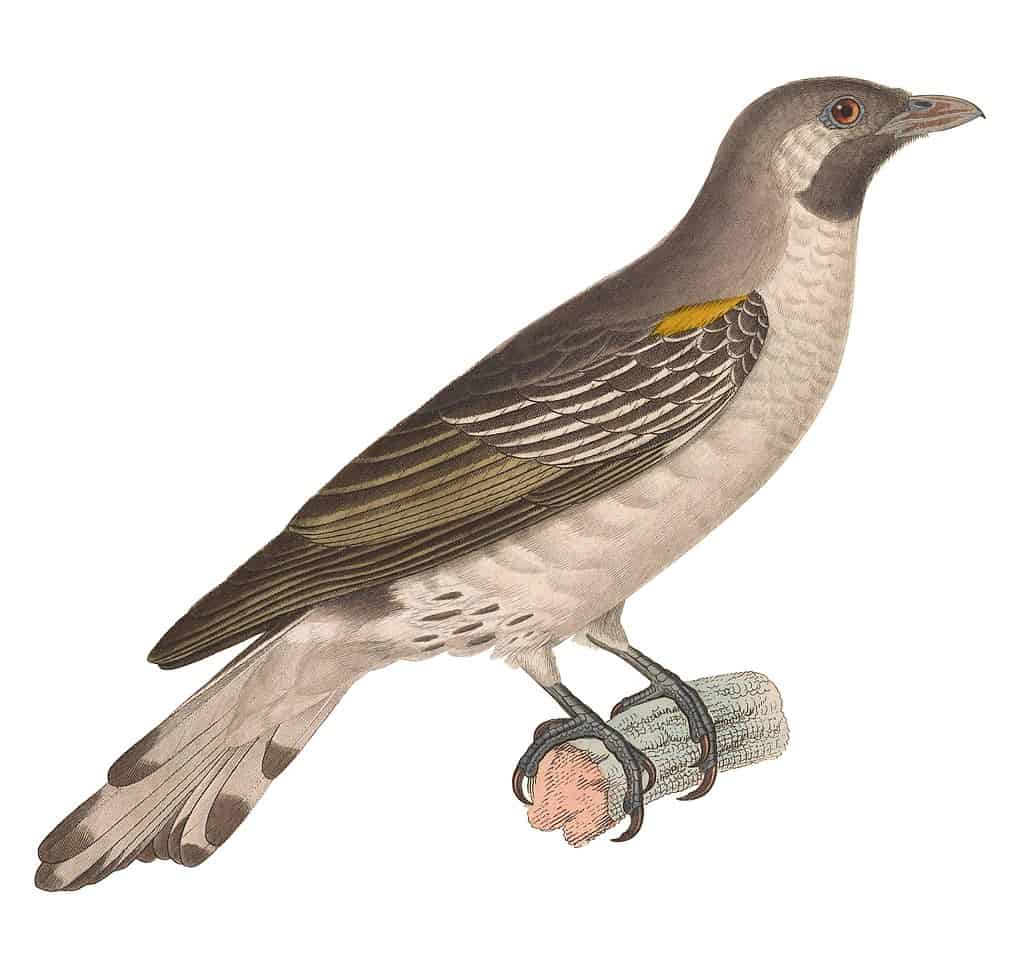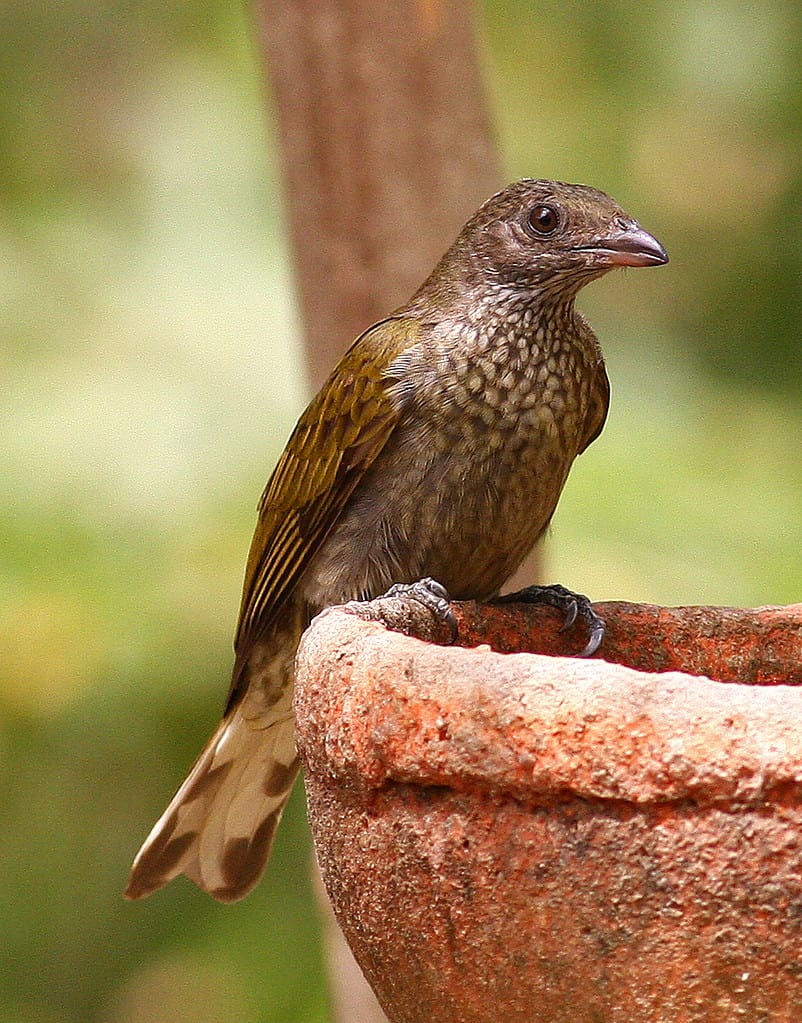
While most of the golden fluid we see in supermarkets is pretty similar, some types of honey are extracted in pretty unique ways. For instance, in some parts of Africa, some honey is harvested with the aid of a bird. The bird guides people to bee colonies in exchange for some treats. That bird is called, of course, the greater honeyguide.
It’s a beautiful day in the African savanna with the sun just rising around the horizon. A group of people walks, guided by the high-pitched trill of a bird. This is the greater honeyguide, a remarkable bird that has a unique relationship with humans.
This is not a scene from a fairy tale, but a real-life partnership between humans and the greater honeyguide (Indicator indicator), a bird species found in sub-Saharan Africa. We’re about to embark on a journey to explore this fascinating relationship that has existed for thousands of years.
Indicator indicator
For many generations, the honeyguide and humans have collaborated to find and harvest bee colonies. The bird guides the humans to the bee colony. Then, the humans destroy the nest and take the honey, and then birds are feed on the beeswax and honey grubs. It’s one of the most remarkable mutualism relationships in nature.
Honey has been consumed in Africa for at least 20,000 years, potentially even before proper agriculture. But harvesting wild honey is very different from “agricultural” honey. A wild honey gathering will is an arduous task involving a lot of risks that is not for the faint-hearted.
Walking for long distances, enduring the harsh heat, trekking steep slopes, and getting stung by bees is just a common occurrence for expert gatherers who stoically face the entire process. To make matters even worse, it’s not always clear whether they’ll be successful — which is why it’s so useful to have a guide.
Through the years, some cultures have realized that they can rely on the help of a small, sparrow-sized bird that guides them.
A remarkable partnership

The greater honeyguide is a small African bird that has an excellent ability to detect bee colonies — but a less-than-excellent ability to bypass the bees’ defenses.
This is where humans come in. Early humans in Africa discovered that by following the honeyguide’s calls and movements, they could be led to beehives. In return for the bird’s guidance, humans would break open the hive and share the spoils, allowing the honeyguide to feast on the wax and larvae inside. This is how this extraordinary behavior of guiding honey hunters came to be.
The greater honeyguide measures around 20 cm (7.9 in) long and weighs about 50 g (1.8 oz). It’s not the only African honeyguide — several other birds exhibit this behavior to some extent.
By itself, it only enters the bees’ nests when bees are torpid in the early morning. It also feeds at abandoned sites. It also doesn’t exhibit this partnership only with humans. The greater honeyguide also works with the honey badger, which like humans, has the ability to raid bee nests.
A practice that’s been going on for centuries

The bird inhabits sub-Saharan Africa and is found in primarily open and dry forests. It’s a well-known species to the locals. In fact, the history of this bird and humans goes back a long time. The first ever account of this small bird’s behavior was way back in 1588 when a Portuguese missionary based in Mozambique observed the bird frequenting the candlesticks in his church (although the practice was probably happening long before that).
That is not the only bizarre thing he noticed. He wrote that the greater honeyguide would also help people get to the location of the honey bees’ colony. His observations at that time were deemed absurd and simply rejected. However, in 1980 this was scientifically proven as a result of the three-year study of Kenyan birder Hussein Isack and German zoologist Heinz Ulrich Reyer.
Studies have shown that the use of honeyguides by the Boran people of East Africa reduces their search time for honey by approximately two-thirds. In fact, the Boran people use a specific whistle to summon the bird. The whistle is called a fuulido. In northern Tanzania, the Hazda people are 560% more likely to find a bee nest when they work with honeyguides. Similar results have been reported for several other populations.
No doubt, this is a fruitful partnership that’s been going on for a long time.
Summoning the greater honeyguide
The fuulido isn’t the only way to summon the greater honeyguide. Northern Kenya is home to the nomadic Boran and Yao people who are well acquainted with the greater honeyguide. They summon the bird through a distinct whistle by blowing air into clasped fists, modified snail shells, or hollowed palm nuts. This creates a special sound that is heard from a distance of over one kilometer.
For the Yao people, they create a brrrr and hmm sound with rising infection as a call. As the signal goes on, the honeyguide flies close to humans moving restlessly between perches while creating a persistent call “tirr-tirr-tirr”, which seems like a way of saying “I got you, pal!”. The partnership becomes initiated as the bird then exhibits a directional flight above tree tops and perches in lower branches as the honey hunter follows.
During the journey, it continuously repeats its call making itself visible and in the same way, Borans and Yao continue to whistle and talk in response.
When it senses a beehive, it will make a unique call, perch and fall silent. This behavior indicates that the colony is just within proximity allowing people to narrow their search. In fact, studies revealed without the birdguide search time for the nest was on average 9 hours but it has greatly reduced to 3 hours.
A reward for the birds
So what is in it for the bird that they agree to do such a favor? The simple answer is food. Greater honeyguides feed on pieces of honeycomb and the bees.
By helping people locate the colony, the bird secures its diet without the risk of being stung by the bees. It is a win-win situation for both humans and for the greater honeyguides (at the expense of the bees, of course). This astonishing interaction is one great example of mutualism that naturally exists.
Experts hypothesize that the specialization between humans and honeyguides is a product of a recent coevolutionary event. However, it is not yet definitive. We need more studies to understand this amazing interaction. Notably, the bird also seems to guide other species to the same goal — particularly, the honey badger and baboons, although this is still debated among biologists.
The partnership is so well cemented in African folklore that, legend has it, if you don’t reward the bird, it will lead you to a lion or venomous snakes as a punishment. However, not all cultures reward the bird. In fact, some intentionally keep it starving.
The Hazda people, for instance, often burn or hide the wax or anything the bird could eat, with the purpose of keeping it hungry and more likely to guide again. This has led many birds in the area to stop guiding people to honey.
Guiding is slowly fading
Sadly, this extraordinary ability of the greater honeyguide is at risk of fading away. As people have acquired knowledge on beekeeping and the replacement of honey by artificial sweeteners, the honey gathering has declined in the past years which in turn reduced the need for a greater honeyguide. Field observations revealed that most adult birds do not exhibit the guiding behavior anymore.
Because of this alarming threat, scientists are doing their best for the conservation of the greater honeyguide and its cultural uniqueness. Notably, a website called Honey Guiding was started to attract citizen scientists in helping conservation through data gathering. When a greater honeyguide is sighted, people are encouraged to record its location, age (juvenile or adult), guiding behavior (if present), and other notable observations. Users then submit data to the website. This can greatly help experts in studying the ecology, evolution, and conservation implications of the honeyguide and human relationship as a window into the origin and maintenance of mutualism between species.
Ultimately, the relationship between humans and honeyguides is a remarkable example of cooperation and mutualism. For a long time, this story of cooperation seemed too surreal to believe, but it’s a testament to how humans and other species can collaborate in unexpected ways.


